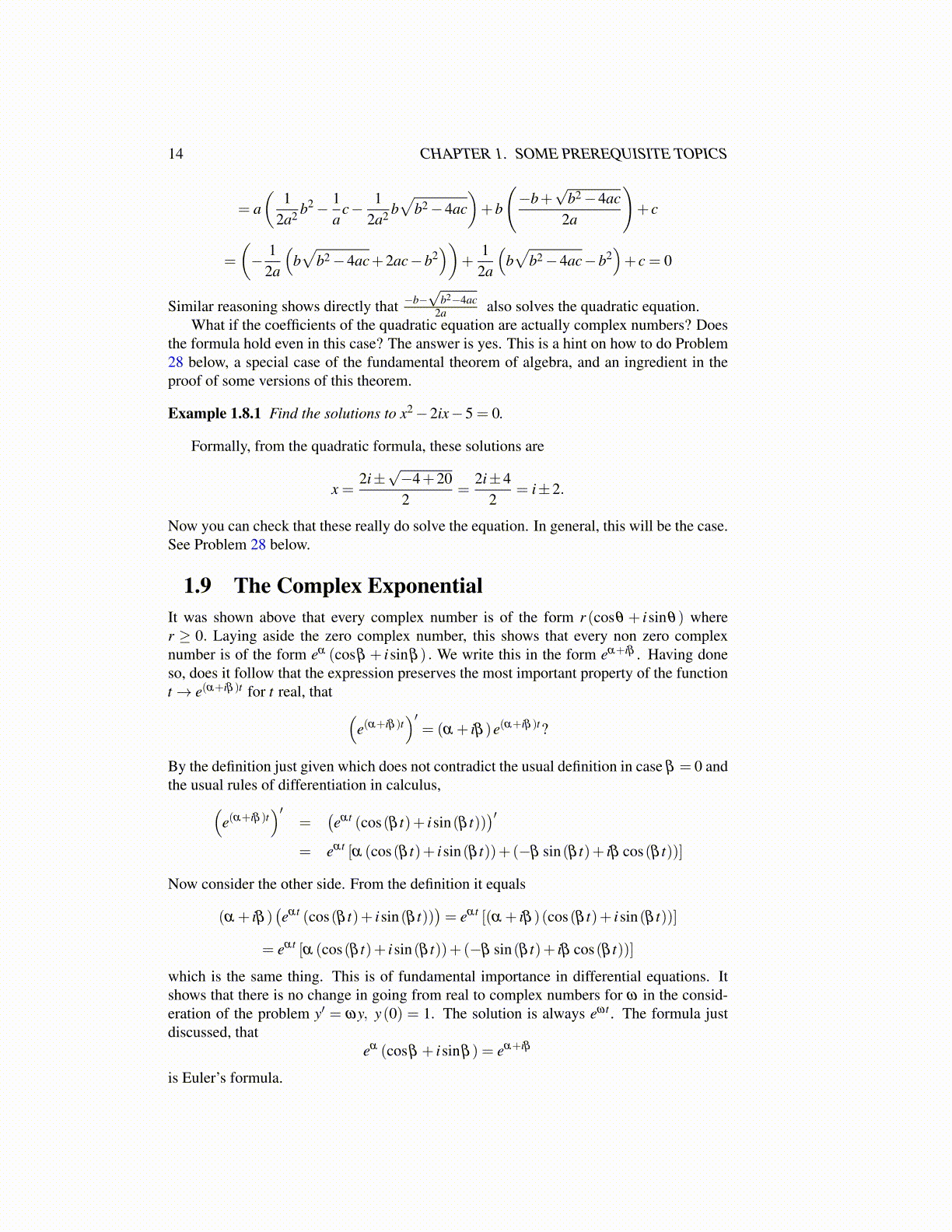
14 CHAPTER 1. SOME PREREQUISITE TOPICS
= a(
12a2 b2− 1
ac− 1
2a2 b√
b2−4ac)+b
(−b+
√b2−4ac
2a
)+ c
=
(− 1
2a
(b√
b2−4ac+2ac−b2))
+1
2a
(b√
b2−4ac−b2)+ c = 0
Similar reasoning shows directly that −b−√
b2−4ac2a also solves the quadratic equation.
What if the coefficients of the quadratic equation are actually complex numbers? Doesthe formula hold even in this case? The answer is yes. This is a hint on how to do Problem28 below, a special case of the fundamental theorem of algebra, and an ingredient in theproof of some versions of this theorem.
Example 1.8.1 Find the solutions to x2−2ix−5 = 0.
Formally, from the quadratic formula, these solutions are
x =2i±√−4+202
=2i±4
2= i±2.
Now you can check that these really do solve the equation. In general, this will be the case.See Problem 28 below.
1.9 The Complex ExponentialIt was shown above that every complex number is of the form r (cosθ + isinθ) wherer ≥ 0. Laying aside the zero complex number, this shows that every non zero complexnumber is of the form eα (cosβ + isinβ ) . We write this in the form eα+iβ . Having doneso, does it follow that the expression preserves the most important property of the functiont→ e(α+iβ )t for t real, that (
e(α+iβ )t)′
= (α + iβ )e(α+iβ )t?
By the definition just given which does not contradict the usual definition in case β = 0 andthe usual rules of differentiation in calculus,(
e(α+iβ )t)′
=(eαt (cos(β t)+ isin(β t))
)′= eαt [α (cos(β t)+ isin(β t))+(−β sin(β t)+ iβ cos(β t))]
Now consider the other side. From the definition it equals
(α + iβ )(eαt (cos(β t)+ isin(β t))
)= eαt [(α + iβ )(cos(β t)+ isin(β t))]
= eαt [α (cos(β t)+ isin(β t))+(−β sin(β t)+ iβ cos(β t))]
which is the same thing. This is of fundamental importance in differential equations. Itshows that there is no change in going from real to complex numbers for ω in the consid-eration of the problem y′ = ωy, y(0) = 1. The solution is always eωt . The formula justdiscussed, that
eα (cosβ + isinβ ) = eα+iβ
is Euler’s formula.